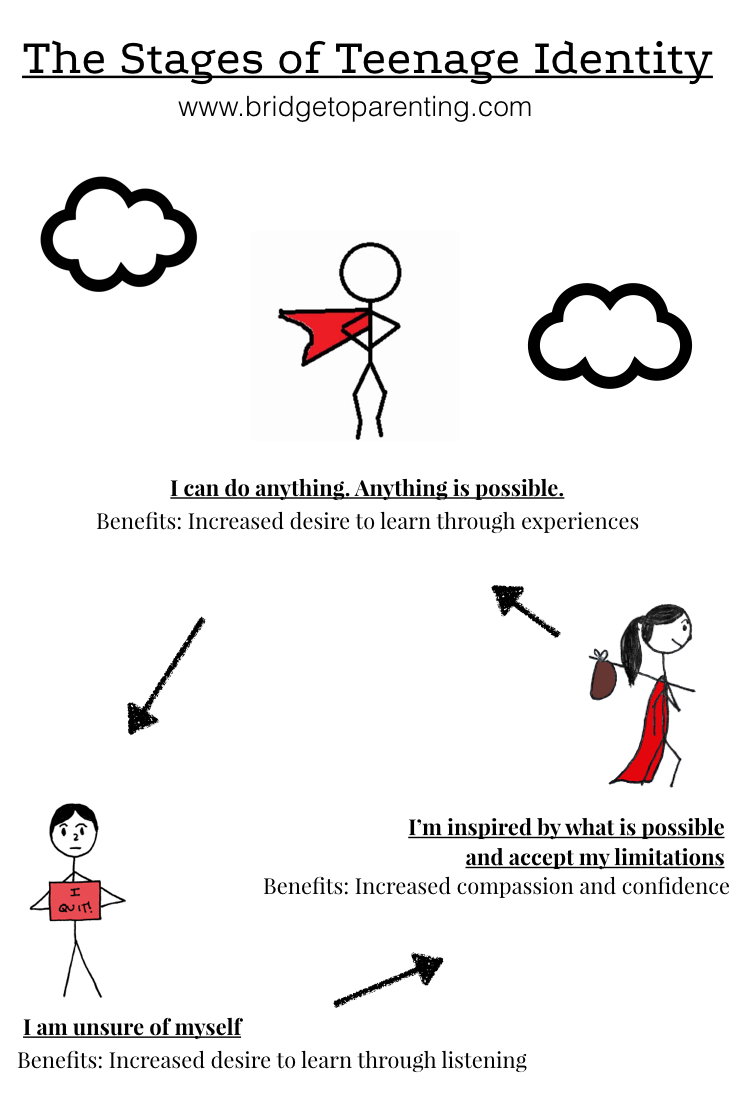Why is my teen out of control? 3 things you should start doing now.

What is wrong with my teen?
Wrong question
The right question is: What are the issues that are driving our teens to act the way they do?
The effort here isn’t to investigate what is wrong with our teens but to discover what makes them tick. If you can learn the story behind their behavior then you will know how to effectively influence their behavior.
But before we go forward let’s go back
Remember that the point of the following series of articles is to address how we can change the behavior of our teens. There are 4 Steps to creating change in their behavior.
4 Steps to changing behavior
- Step 1: Slow down and pay attention
- Step 2: Learn the story
- Step 3: Learn the triggers
- Step 4: Create lasting habits
Note that the majority of the steps to changing behavior has nothing to do with action. Changing behavior has more to do with awareness and learning. In the following steps, the action (Step 4) only comes after understanding the context and triggers. Essentially, we are working to become more dependent on what we see as opposed to being reactive to how we feel.
In this specific article, I’m going to walk through step 2 (see step 1 here). I am going to show you the realities that surround our teens and informs their behavior.
Step 2: Learn the story
There are two things that drive the teenage story:
- Their Brain
- Their Belief
1. Our teens are normal but their brains are going crazy
Before I get into it, let me point you to the experts. Here are a few great links that will explain exactly what is happening in the teenage brain.
The Teenage Brain Explained- SciShow
The Teenage Brain- Daniel Seigel M.D.
Brainstorm: The Power and Purpose of the Teenage Brain
It is not just RAGING HORMONES, the brain is hitting a reset button
Believe it or not, “raging hormones” are a small part of the many things happening in their bodies. The brain takes the central role in the development at this age. It is going through a significant overhaul and it’s rebuilding itself.
Here are some highlights of what is happening in the crazy teenage brain
What this means: The brain is selecting which circuits are keepers and which can be let go. This is based on a “use it or lose it” principle. The parts that they use the most will be kept while the parts they hardly use will be deleted. This is why it is incredibly important to lead them through new experiences and practice values
What this means: Sections of the brain are being streamlined and integrated with one another. There will eventually be a greater ability to use the part of the brain responsible for problem solving and reasoning. There will also be better coordination with the entire brain
What this means: They get bored quickly by the monotonous and routine aspects of life. However, they become extremely excited about something new and exciting. Everything that excites them is experienced as the best thing ever. Their crush becomes the thing their world revolves around. The video game they are playing consumes their waking moments and conversations.
What is this crazy brain doing to my child?
- It is preparing them to leave their parents and identify closely with their peer group.
- It is helping them move towards the unfamiliar, uncomfortable, uncertain and even the unsafe.
- Hyper-rational thinking! This is when a teen chooses to do something because it is exciting while at the same time de-emphasizing the danger involved. Yay!
- The brain does this craziness until around 21-years-old.
So, though it is easy to think your teen is being manipulative and defiant, surprisingly, their cray brain is making them do it.
2. Belief
“As soon as you trust yourself, you will know how to live.”
-Johann Wolfgang von Goethe
Any good fiction is built around a strong main character.
The main character is made up of a set of defining beliefs and those beliefs are tested throughout the story. As they grow, part of their beliefs is proven while some fall apart.
Welcome! This is the teenage story.
Our teens strive for a defining belief that evolves as they walk through life’s trials.
Here are the 3 stages of the development of teenage belief:
*Note, this is not linear. They will not progress from stage 1 through to stage 3. They can and often do skip around.
Stage 1: I can do anything, anything is possible
For a teen that embraces this mindset, they have to believe that there is nothing outside of their reach. The perceived boundlessness of life will often lead to them doing as much as they can within a short span of time.
They try on change like we try on winter coats. This week they may choose to be the star basketball player and will practice endless hours to sharpen their skills. Next week they may decide that they want to be an Instagram celebrity, and so they become obsessed with posting stories to social media. Today it may be medicine, tomorrow it could be engineering.
Pros: Teens are adding experiences and through practice gain more confidence and solidify their identity.
Cons: If they go too far in taking risks, they may cause unneeded damage that can potentially be destructive to their overall development.
Stage 2: I am unsure of myself
There
All of the potential pathways can cause some insecurity about the best choice. Often, they will decide on one path and stick to it or they will stay in a perpetual space of not knowing what to do next.
This is a time where teens are not dysfunctional, they are just very careful.
Pros: Teens here tend to be more willing to learn through teaching as opposed to needing to go through experiences.
Cons: They can potentially remain very naive
Stage 3: I’m inspired by what is possible and accept my limitations
Ding! Ding!
We have arrived at the winning stage.
For the sake of the mature development of their belief, they will have to walk through disappointments about what they can and cannot do. At the same time, it becomes essential that the ability to hope and dream for better is not compromised.
Pros: Here the teen will have the insight to be balanced. They will be able to access both compassion and confidence.
Cons: This is not a comfortable or easy road. They just have to get through it.

Get their hearts if you want them to change
To help direct this journey, you have to get their hearts. Rules with no relationship is a dictatorship. In this disciplinarian parenting style, the most success you can expect is to create a teen that performs well in your presence but may not be the same person behind your back. Behind your back, they will either find someone who can call the shots or intentionally look for ways to rebel against everything you stand for.
For the best outcomes, we have to walk alongside our teens. They need a sounding board and a baseline secure relationship as they contend with the challenges ahead.
So how do you as a parent create a connection with your teen?
Time to cross a bridge
Crossing the bridge [your turn]
3 ways to connect with a teen
1. Be Real
“Every generation imagines itself to be more intelligent than the one that went before it, and wiser than the one that comes after it.”- George Orwell
Our teens naturally perceive us as being out of touch.
We naturally perceive our teens to be naive.
This isn’t new, it has been happening for literally thousands of years. Take a look at BBC’s article about this exact thing.
Now, the task is to evolve beyond these “generational” patterns and ensure our kids know we are more than just another stereotype. They have to see that we are real people with dreams, thoughts, and hopes. We are humans that want to connect with our teens on a human level. Demonstrate that you are not omniscient, you do not have all the knowledge. In fact, there are things you want to learn. As a human, there are things that make you excited and things that make you a little insecure. Your teen needs to know that they are not the only human in the house.
2. Be Relevant
I have spent 6 years of my life as a house dad for young men that turned 18 years old while in foster care. In most states, young adults that turn 18 in foster care are often given a check and told they are on their own. I volunteered to live in a home where these boys could move in until they felt confident enough to go out on their own.
While this was fulfilling and fascinating work, it was also a deep reminder of how out of touch and old I was getting. (and we are only talking about 5 year age gap)
I had to find a way to create a bridge of relationship so they could trust me enough to allow me to lead them.
Here is a list of things I did to become more relevant for my young adults:
- Playlist Saturday- we would create a playlist of all of our songs while we cleaned the house on Saturday mornings
- Bollywood movie nights- we created our own subculture of watching and enjoying Bollywood movies together. (Try to image 6 grown men singing and dancing to Indian love songs)
- Community Couch- I intentionally put a small couch in my room so the guys would feel free to come to sit and hang out with me in my own room.
- Protecting their precious- SHORTCUT TO RELEVANCE***** whatever they considered precious, I treated it as precious. (Includes phones, secret crushes, game systems, shoes, ideas, beliefs)
3. Be Resourceful
“Quick! Hire a teen, while they still know everything” – UNKNOWN
To be a teen, you have to believe you have things more or less figured out. In order to keep pace with your peers, you have to present an impression that you are competent.
However, if we really looked behind the show we would realize our teens still feel very insecure, especially about the things they do not know. They feel like children in adult bodies.
For this reason, there is a great opportunity to be a resource for your teens.
When being a resource to your teen, the effort isn’t just to teach them what they do not know but to lead them through what is unclear.
IMPORTANT: Don’t settle for being a teacher, try to be a tour guide.
What is the difference?
A teacher relies on the principle of achievement which means that in order for them to progress and move forward, they have to complete a test and prove that they have earned the right to advance. This creates a lot of pressure and does not provide a great environment for a teen to learn from a parent.
Be a tour guide. A tour guide leads them through an area of interest. Whatever bits of information they feel important they can keep. Other parts of the journey may or may not be of use. This allows the teen to feel like a part of the experience not the subject of it.
If you can lead them through the experiences that they have interest in, but are unsure about, you will gain a valuable space in their hearts.
Examples include learning to drive, filling out college application forms, maintaining a car, cooking their favorite meal etc.


